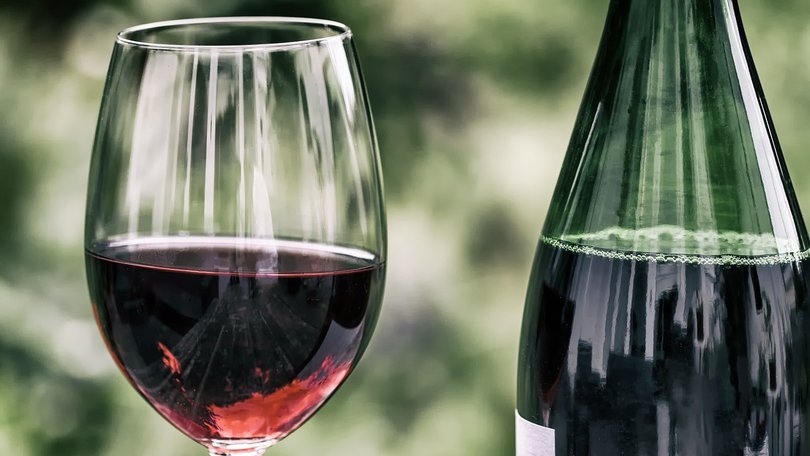How to buy a great bottle of wine — and which ones to ‘stay completely away from,’ according to a sommelier

If you had $US150 ($225.16) to spend at any store in your neighbourhood, where would you spend it?
A couple of months ago, my boyfriend and I won a sweepstakes which granted us a $US150 credit to the local business of our choosing. We picked the wine store.
We typically spend $US25 to $US40 a bottle, so we thought we could get ourselves one or two nice wines to have on a special occasion. But when you’re buying something you expect to be one of the best wines you’ve ever drank, the pressure is on.
Sign up to The Nightly's newsletters.
Get the first look at the digital newspaper, curated daily stories and breaking headlines delivered to your inbox.
By continuing you agree to our Terms and Privacy Policy.For someone like me, when hitting that $US100 threshold, “there should be a pretty significant step up in terms of the quality of the wine,” says Thatcher Baker-Briggs, a court-certified sommelier and founder of Thatcher’s Wine.
“And I think when you walk into this warehouse of wine, it’s not approachable, it’s not easy to understand.”
Whether you’re looking to buy a special bottle or just want to get the best value before your next dinner party, here are Mr Baker-Briggs’ three best tips for cutting through the noise and buying a great wine.
1. Enlist help
Your best bet for getting a great bottle, Mr Baker-Briggs says, is to have someone like him walking you through the aisles.
He likens buying a special bottle to buying the first watch or piece of art in your collection: “The key to being successful in your first purchase is finding someone who understands what you’re trying to do.”
That likely means finding the nearest store that specialises in wine, rather than stopping by the liquor section of the supermarket. An online store might be a good option too — as long as there’s someone to whom you can explain what you’re looking for.
If you’re not the type to ask for help, don’t be afraid to crowd-source, Mr Baker-Briggs adds. Online sources, such as CellarTracker, act as community hubs of tasting notes. Even Instagram can be a valuable place to pick up intel on bottles you’re considering.
“A lot of people are putting a lot of time and effort into their accounts, either writing reviews or thoughtful stories about producers,” Mr Baker-Briggs says.
2. Pay attention to the label
Let’s be honest — many of us buy choose wine based on the label. And that’s not a bad thing, provided you’re looking at the right stuff.
Some labels bear red flags that should turn you off the bottle immediately, Mr Baker-Briggs says. “If you see ‘sustainably grown’ or ‘vegan’ or whatever, stay completely away from it,” he says. “No one making quality wine is putting those things on their label.”
Certifications, such as organic and biodynamic, listed on the back label are often signs of quality, he says. However, that may mean the wine is mass produced and not the special bottle you’re looking for.
An organic certification “is a very expensive thing to get in France and Italy, and in the EU in general,” Mr Baker-Briggs says. “A lot of people chase this, but if it says ‘organic certified,’ they’re probably a larger winery. A lot of smaller producers can’t afford this or don’t see the value. It could be totally organic. It just doesn’t say that on the back label.”
Conversely, while no guarantee of a great wine, the name of the vineyard on the back of a bottle is a very good sign, he says.
“That’s basically saying, we care about where these grapes come from,” Mr Baker-Briggs says. “It’s a great way to understand that there’s probably some quality, and there’s an interesting story behind this.”
3. Shop value regions
If you’re looking to buy a nice bottle, you may be tempted to gravitate toward what you know to be great regions. But there’s “little to no value” in the wines of Bordeaux and Napa, Mr Baker-Briggs says. While there are certainly excellent wines from there, he says, you’ll have to pay top dollar to get them.
To get more bang for your buck, Mr Baker-Briggs suggests focusing on regions with up-and-coming young producers who are changing the world of wine.
“In Burgundy (France) right now, some younger people are looking at some higher-elevation areas that years ago were too cold to make wine, and now with climate change might have become a sweet spot,” he says. “There are some really amazing wines in the $US40, $US50, $US60 range that you drink them and you’re like, ‘Wow, that’s incredible.’”
The same goes for the Piedmont region of Italy, where the younger generation is producing terrific Langhe Nebbiolo, Barbera, Freisa and Dolcetto at affordable prices. “You can find these wines for sub-$US40, and they’re delicious. They’re emotional.”
There are even values to be had in Champagne, where smaller grape growers — such as Julien Prelat — who traditionally sold to the likes of Dom Perignon and Veuve Clicquot are starting to produce their own bottles.
“They’re saying, ‘I know my grapes are better than everyone else’s. So I’m going to make my own champagne,’” he says. “And it’s really cool because they don’t make a million bottles a year — they might make 5000 or 10,000. And you can walk into those great bottles at $US50 or $US60 a bottle.”
CNBC
